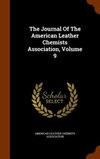Polyurethane Electrospun Fiber Biomimetics Membrane for Constructing the Structure of Grain Layer with Good Breathability for Cattle Split Leather
IF 0.5
4区 工程技术
Q4 CHEMISTRY, APPLIED
Journal of The American Leather Chemists Association
Pub Date : 2021-08-02
DOI:10.34314/jalca.v116i8.4358
引用次数: 0
Abstract
The traditional thick coating on split leather does not have the ability to breathe like full grain leather. The air and water vapor permeabilities of full grain leather are well known properties due to its fiber woven structure. Simulating the fiber morphology and weaving structure of the dermis or grain layer is very important to construct a top surface layer for split leather. In this paper, a PU (polyurethane) foam layer is put first on the split to enhance the adhesion of a second application of a superfine fibrous PU resin. This foam uses well-known waterborne polyurethane foaming technology. This dried foam has good breathability because of high porosity. A superfine fiber membrane is next put atop of the foam layer by using an electro-spun polyurethane resin. This second resin imitates collagen fibers in the network structure of the leathers’ grain layer. Thus, this resultant electrospun fiber biomimetics membrane simulated the grain layer of natural leather. SEM showed the morphology and structure of this electrospun fiber biomimetic membrane to be like that of the grain layer of natural leather. The porosity and apparent density were basically the same as the grain of leather, which were 63.65% and 583.878 kg/m3 respectively. The air and water vapor permeability of the biomimetics membrane were also as high as 2250 mL·cm-2·h-1 and 8753.02 μg·cm-2·h-1 respectively. Therefore, the biomimetics membrane largely restored the ability to breathe of split leather. Thus, this method simulates the performance and structure of full grain leather and is a novel method for industrial production构建透气性好的牛皮颗粒层结构的聚氨酯静电纺纤维仿生膜
传统的厚涂层不像全纹皮革那样具有呼吸能力。由于其纤维编织结构,全粒皮革的空气和水蒸气渗透性是众所周知的性能。模拟真皮或颗粒层的纤维形态和织造结构对构造裂皮的顶面层具有重要意义。在本文中,首先将PU(聚氨酯)泡沫层放在裂片上,以增强第二次应用超细纤维PU树脂的附着力。该泡沫采用著名的水性聚氨酯发泡技术。这种干泡沫具有良好的透气性,因为高孔隙率。接下来,一层超细纤维膜通过电纺聚氨酯树脂覆盖在泡沫层的顶部。第二种树脂在皮革颗粒层的网状结构中模仿胶原纤维。因此,这种合成的静电纺纤维仿生膜模拟了天然皮革的颗粒层。SEM分析表明,该静电纺纤维仿生膜的形态和结构与天然皮革的颗粒层相似。气孔率和表观密度与皮革颗粒基本一致,分别为63.65%和583.878 kg/m3。仿生膜的空气透性和水蒸气透性也分别高达2250 mL·cm-2·h-1和8753.02 μg·cm-2·h-1。因此,仿生膜在很大程度上恢复了裂皮的呼吸能力。因此,该方法模拟了全粒皮革的性能和结构,是一种工业生产的新方法
本文章由计算机程序翻译,如有差异,请以英文原文为准。
求助全文
约1分钟内获得全文
求助全文
来源期刊

Journal of The American Leather Chemists Association
工程技术-材料科学:纺织
CiteScore
1.30
自引率
33.30%
发文量
29
审稿时长
3 months
期刊介绍:
The Journal of the American Leather Chemists Association publishes manuscripts on all aspects of leather science, engineering, technology, and economics, and will consider related subjects that address concerns of the industry. Examples: hide/skin quality or utilization, leather production methods/equipment, tanning materials/leather chemicals, new and improved leathers, collagen studies, leather by-products, impacts of changes in leather products industries, process efficiency, sustainability, regulatory, safety, environmental, tannery waste management and industry economics.
 求助内容:
求助内容: 应助结果提醒方式:
应助结果提醒方式:


